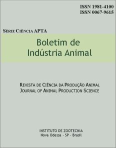Tiller demography and dry matter accumulation in Florakirk (Cynodon spp) grazed swards
Keywords:
Cynodon, tillering, flowering, herbage accumulationAbstract
The objective of this study was to evaluate the tiller demography and dynamics of Cynodon spp cv. Florakirk swards. Experimental treatments corresponded to four “steady state” conditions characterised by sward surface heights (SSH) of 5, 10, 15, and 20 cm maintained by sheep under continuous stocking and variable stocking rate. Treatments were allocated to experimental units according to a complete randomised block design, replicated four times. Tillering evaluations consisted of tagging and counting of all tillers present and new tillers born within two 15 cm diameter plastic rings (PVC) per experimental unit. Pasture responses evaluated were: tiller population density (TPD), tiller natality (TNR) and mortality rates (TMR), proportion of flowering tillers (PFT). Additionally, herbage accumulation (HDMA) was measured using exclosure cages. There was a time effect on all studied variables (P<0.05). The highest TNR and TMR were observed during summer, indicating a high turnover in tiller population at that time of the year. No correlation was observed between TPD and HDMA (r=0,14) throughout the experimental period. PFT was very influential on TNR and TMR. Intense flowering influenced significantly TNR and TMR. Variations in SSH should be used in order to ensure the maintenance of high TNR during periods of high TMR.
Downloads
Downloads
Published
Issue
Section
License
Os autores não serão remunerados pela publicação de trabalhos, pois devem abrir mão de seus direitos autorais em favor deste periódico. Por outro lado, os autores ficam autorizados a publicar seus artigos, simultaneamente, em repositórios da instituição de sua origem, desde que citada a fonte da publicação original seja Boletim de Indústria Animal. A revista se reserva o direito de efetuar, nos originais, alterações de ordem normativa, ortográfica e gramatical, com vistas a manter o padrão culto da língua e a credibilidade do veículo. Respeitará, no entanto, o estilo de escrever dos autores. Alterações, correções ou sugestões de ordem conceitual serão encaminhadas aos autores, quando necessário. Nesses casos, os artigos, depois de adequados, deverão ser submetidos a nova apreciação. As opiniões emitidas pelos autores dos artigos são de sua exclusiva responsabilidade. Todo o conteúdo deste periódico, exceto onde está identificado, está licenciado sob a Licença Creative Commons Attribution (CC-BY-NC). A condição BY implica que os licenciados podem copiar, distribuir, exibir e executar a obra e fazer trabalhos derivados com base em que só se dão o autor ou licenciante os créditos na forma especificada por estes. A cláusula NC significa que os licenciados podem copiar, distribuir, exibir e executar a obra e fazer trabalhos derivados com base apenas para fins não comerciais.













